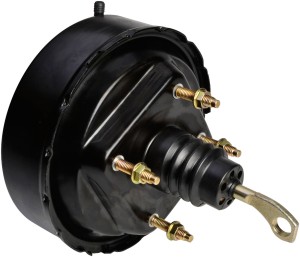As seen in Airside International, February-March 2015
IMPROVING EXISTING PARTS TO MEET DEMANDING GSE REQUIREMENTS IS SOMETHING OF AN ART, AS SAGE PARTS’ MICHAEL BLOOMFIELD EXPLAINS.
Anyone who has worked on the ramp or has just observed the hustle and bustle of a busy ramp knows that it can be a most unforgiving environment. Certainly it’s no place for inferior parts used in ground support equipment; parts failures can cause expensive delays and downtime.
At Sage Parts, GSE experts analyze virtually every aspect of ramp operations throughout the world, and continually uncover the shortcomings of off-the-shelf parts that were originally intended for vehicles in other industries such as automotive, over-the-road transportation, material handling and many other industry applications besides. Sage engineers focus on the inferior reliability of those parts that were created for other industries specified into GSE design, determining exactly why the high failure rates are occurring and then through perceptive engineering, vastly improve the design of the parts. These parts are not only re-engineered, but go through extensive testing to ensure they perform better and last longer in GSE applications.
BUILDING BETTER MOUSETRAPS
There are many examples of the ways in which Sage Parts has re-engineered and improved parts utilized in other industries and made them ramp-ready and more reliable in GSE operations. Examples include a heavy duty shifter, brake booster, a high efficiency copper/ brass radiator, an ignition switch and the Ford 300 engine, governor and carburetor. Let’s take a closer look at each of these examples.
For the re-engineered heavy duty shifter, Sage engineers have created a design featuring low friction that minimizes the abrasion and wear caused by metal parts sliding and repeatedly rubbing together. A synthetic rubber, spring-like bushing has also been engineered into the shifter’s design to withstand the most extreme environmental conditions while providing optimal UV protection, which is a major cause for the original shifter’s failure.
 The Sage brake booster redesign resulted from research showing that while the original brake boosters were fine for lighter weight automotive vehicles, they were no match for GSE. To meet GSE vehicle demands, the brake booster’s pedal rod and power piston components were both redesigned to perform under higher degrees of stress. The improved power piston material and design also accommodates higher stopping loads inherent in ramp operations.
The Sage brake booster redesign resulted from research showing that while the original brake boosters were fine for lighter weight automotive vehicles, they were no match for GSE. To meet GSE vehicle demands, the brake booster’s pedal rod and power piston components were both redesigned to perform under higher degrees of stress. The improved power piston material and design also accommodates higher stopping loads inherent in ramp operations.
Re-engineering of the Sage high efficiency copper/brass radiator brought about several key enhancements, including a 25% increase in tank wall thickness, brazing reinforcements both internally and externally on the filler neck, the addition of two anchor points welded to both sides of the tank for more durable inlet/outlet tubes, and a re-designed mounting system, all of which contribute to a much improved, stronger and longer lasting radiator.
The creation of the improved ignition switch began with the realization that many off-the-shelf switches use steel contacts, which create an electrical current arc when subjected to a high moisture environment such as that of airport ramps. The electric arc can cause steel contacts to carbonize and create resistance, which in turn reduces current flow to the starter motor. What’s more, the steel contacts tend to “weld” together. The Sage ignition switch has been re-engineered with silver contacts that will not carbonize or weld together and contains other stainless steel internal parts to resist high moisture intrusion and failure. 
Many readers will know that the Ford 300 is among the most popular engines for use in small tractors and beltloaders. However, as with nearly all engines originally designed for over-the-road use, the Ford 300’s performance and reliability is challenged by the harsh conditions of the ramp that include long idle times, high torque requirements at low rpm and high operating temperatures. Sage engineers have specified many improvements to the engine’s remanufacturing process, enhancing its capabilities for GSE operations. Those improvements include the use of all industrial engine blocks instead of standard automotive blocks, along with strict remanufacturing machining specifications and the use of new parts incorporated with the improved design. New parts include 100% new hypereutectic pistons with an 8:1 ratio, new chrome moly rings, steel industrial timing gears and aluminum silicon alloy main and rod bearings.
The new Ford 300 governor has received several enhancements to achieve engine equilibrium in demanding ramp applications. Additionally, the new Ford 300 carburetor was re-engineered with throttle shaft bushings for a longer life as well as an improved float design, needle and seat and accelerator pump diaphragm.
In addition to the engineering enhancements mentioned above, Sage has made ramp dependable improvements to other GSE parts too numerous to list including a heavy duty E-brake lever, lavatory rinse/fill couplings, potable water fill couplings, drain couplings, C6 transmissions and pre-conditioned air ducting, couplings and adaptors.
RETURN ON INVESTMENT
In short, each of the above improvements to GSE parts can be summed up by three letters: ROI. Parts that are specifically engineered and performance tested for airport ramps are certain to be in service longer and more reliably than those designed for other applications; this has the effect of dramatically lowering labor expenses associated with frequent GSE repairs and substantially reducing the costly prospect of ground support equipment sitting idle on the ramp because a part has failed.



